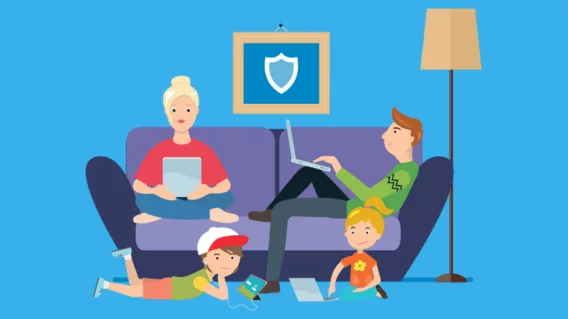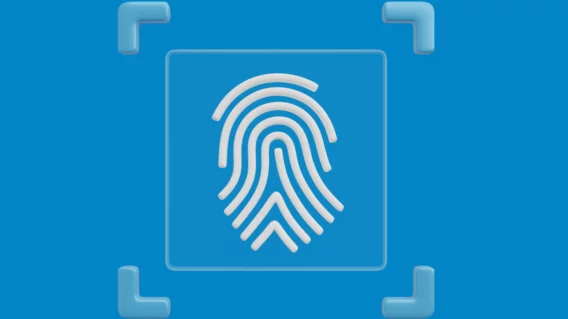9 critical cyber safety lessons to teach your kids

The Internet has changed the way children interact with the world. As many as 95% of teens in the United States have a smartphone, according to figures from Pew Research Center, and about 45% of teens say they are online “almost constantly”.
Around-the-clock connectivity is, for the most part, an amazing thing. Young digital natives have access to a limitless stream of information, entertainment and creative tools, which allow them to connect with the world in a way that simply wasn’t possible even just a generation ago.
Of course, it’s not all rainbows and butterflies. Being constantly connected comes with significant safety risks that are very different – yet no less dangerous – to the hazards children faced 20 or 30 years ago. From cyberbullying to malware and everything in between, parents now have a responsibility to teach their kids how to safely navigate the web and mitigate the risks that await online.
Here are nine essential lessons every parent should be teaching their children about cyber safety:
1. What’s posted online, stays online
In an endless sea of memes, selfies, cat pics and blog posts, it’s easy to think that the content you post online will just get lost in all the noise – but that’s not necessarily the case.
Help your kids understand that the Internet is permanent. The content you post and share can be transcribed, quoted and taken a screenshot of. It can be edited, taken out of context and uploaded to a hundred different websites. If you put it online, you have to be comfortable with the possibility that it’s going to be there permanently, which can have far-reaching consequences on your career and relationships further down the line.
Encourage your children to be mindful of the content they post and how it might affect them and other Internet users, both now and in the future.
2. It’s okay to talk about Internet use
It’s no secret that a good chunk of the internet is inappropriate for kids. While parental controls might be effective up to a certain point (restricting access across multiple devices can be tricky, and by the time they reach their teens most kids are tech-savvy enough to circumvent the controls), open communication is equally important.
Instead of trying to rule the Internet with an iron fist, invite open and honest dialogue. Encourage your children to be transparent about their online activities and make sure they know they can always talk to you if they have any questions or run into any problems on the web. For best results, consider starting the conversation early, working together to establish ground rules and involving your children in the decision-making process.
Taking a collaborative approach and gradually trusting your children to make the right choices will ultimately allow them to take better ownership of their online safety.
3. Keep your passwords a secret
Most kids learn how to share from a young age, but you’ll need to teach them that there are some things they should always keep to themselves: their passwords.
A good password is critical for keeping your accounts secure and preventing cybercriminals from accessing your personal information.
There are a few basic rules for creating a strong password:
- The longer, the better: We recommend aiming for at least 16 characters.
- Make it unique: Don’t reuse the same password for multiple accounts.
- Make it random: Avoid using common phrases and personal references such as birthdays, anniversaries and so on.
- Don’t store your passwords in a text file: If your system is compromised, attackers can steal all your passwords at once. Instead, use a trustworthy password manager such as KeePass.
Check out this blog post for more in-depth information on creating and storing rock-solid passwords.
4. Be mindful of how you use social media
Teach your children that just because they can post something on social media doesn’t mean that they should (remember point #1!). For example, your children should never share their:
- Password
- Location
- Phone number
- Other personal information
- Content that might be considered offensive
They should also be very wary of accepting friend requests and messages from people they don’t know. Take a moment to review the privacy settings of their social media apps, as the default settings may reveal more information than you and your child are comfortable with.
In addition to thinking about the content they share, children also need to be mindful of the content they consume and how long they spend on social media. A variety of studies have found a link between social media use and low self-esteem, poor body image, reduced sleep quality and other depressive symptoms.
5. How to deal with cyberbullying
Today, the realm of bullying extends far beyond the borders of the school playground. Due to the popularity of social media, cyberbullying (the use of technology to threaten, harass or embarrass another person) is common among children and teenagers. In the U.S., about 15 percent of high school students have experienced cyberbullying in the past year, according to official government figures.
Sit down with your child and come up with a plan of how to deal with cyberbullies. Your specific strategy will depend on your circumstances, but it might involve your child turning off their device and telling you, their teacher or another adult they trust. They may also wish to report or block the cyberbully via the social media app.
Remind your child that, no matter how tempting it may be, under no circumstances should they retaliate or respond to the cyberbully, as it usually makes the situation worse.
6. Ask permission before installing new apps
The Internet is awash with all sorts of games, learning apps and creative tools that are sure to appeal to young minds, but remind your child that they’ll need to check with you before they hit install on any new software.
Why? Well, many types of malware are designed to look like legitimate applications. When executed, these malicious applications can have devastating effects, including identity theft, data loss and financial fraud. Some types of malware can even self-replicate and spread to other devices connected to your home network.
It’s important to remember that mobile devices aren’t immune to malware – for example, Google has revealed that the amount of malware installed from Google Play increased by 100 percent in 2018.
In the event that your child does accidentally install malware on their device, you need to be confident that your system is protected. Proven antivirus software such as Emsisoft Anti-Malware and Emsisoft Mobile Security can play a crucial role in protecting your family’s devices from all types of malware.
7. Think before you click
Encourage your children to be vigilant on the Internet and always remember that if something sounds too good to be true, it probably is.
Talk to your children about how phishing attacks work and why they should think carefully before they click on any link. Show them how to hover over a link to check the legitimacy of a URL, teach them to recognize the common signs of phishing scams and encourage them to be suspicious when reading emails and opening attachments, even if it appears to be sent from a trustworthy address.
There are many online attacks that specifically target children, which can potentially lead to malware infection or identity fraud. For example, in 2018, malware authors took advantage of the ongoing Fortnite craze by distributing malware disguised as an aimbot (a type of cheat used in first person shooters that helps players aim perfectly). Similarly, more than 50,000 Minecraft accounts were affected by malware in 2018 due to infected Minecraft skins.
Educate your children about the dangers involved with downloading game hacks, pirated software and entering scam competitions.
8. Be a respectful Internet citizen
Teach your children that the Internet is effectively an extension of society, and the usual rules of communication that apply in the real world also apply online. That means they should always be courteous and respectful and never abuse other people or threaten anyone with physical violence.
Help them understand that although they are interacting with a screen, they are still communicating with a real person with real feelings. Remember the golden rule of netiquette: If you wouldn’t say it to someone’s face, don’t say it to them online.
Emsisoft Endpoint Protection: Award-Winning Security Made Simple
Experience effortless next-gen technology. Start Free Trial9. Balance is key
Last but certainly not least, remind your kids that balance is key. Although technology plays a central role in our day to day lives, it’s important for children to engage in other hobbies and interests in order to continue developing as healthy, well-rounded people.


